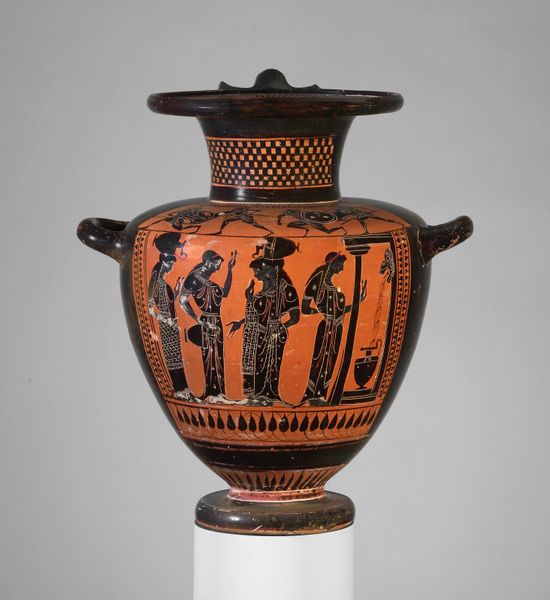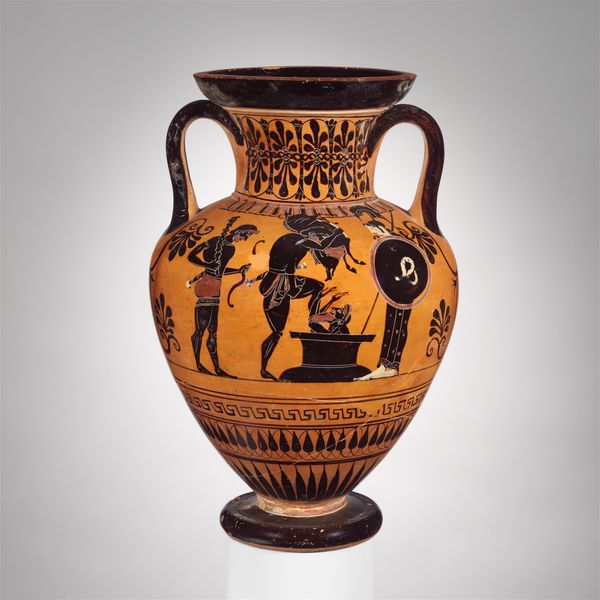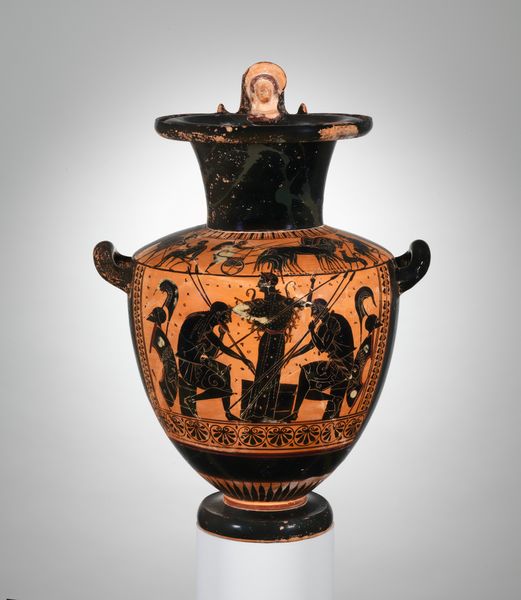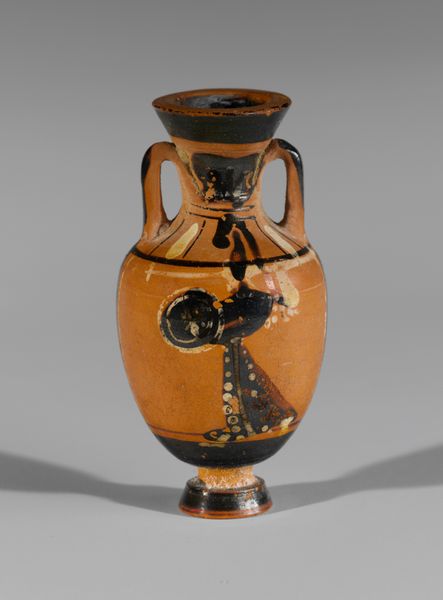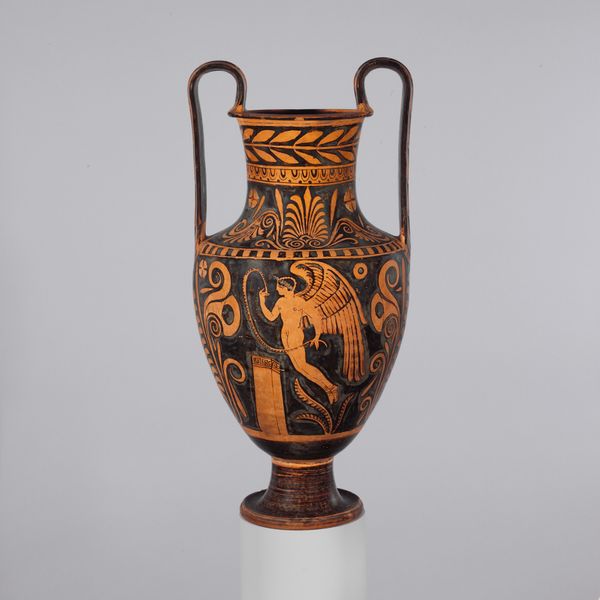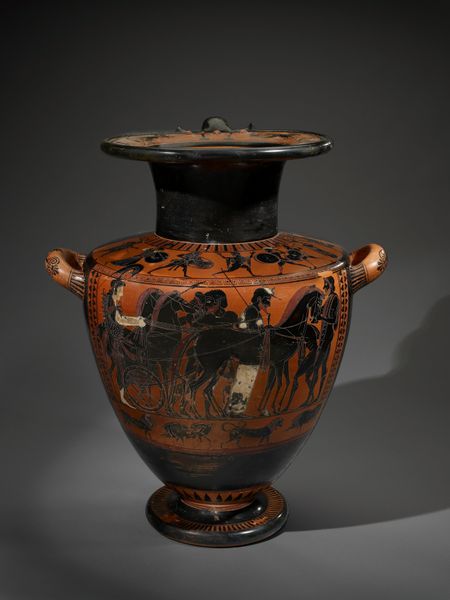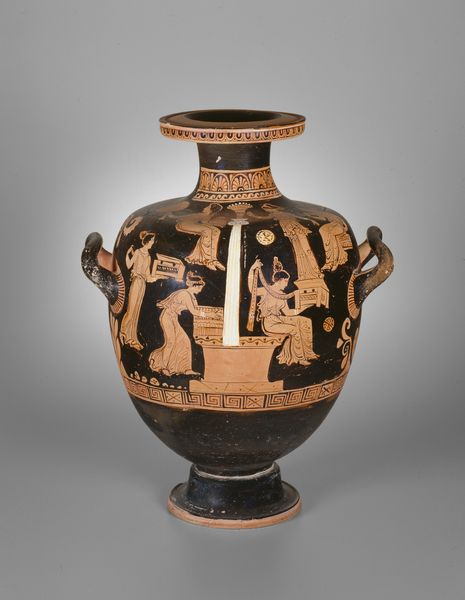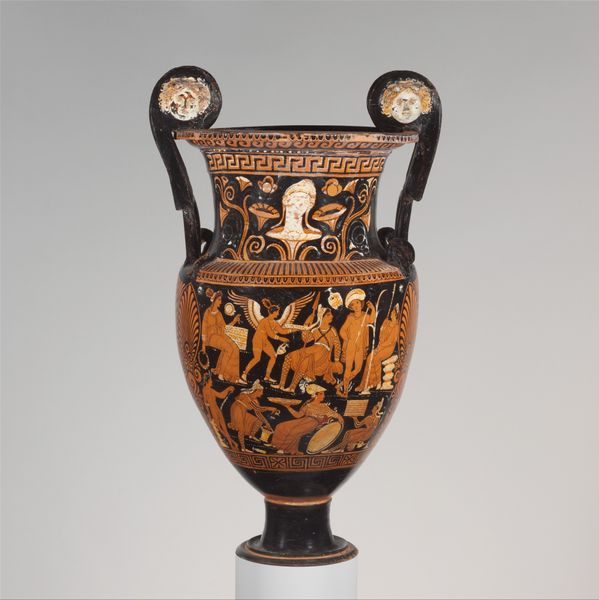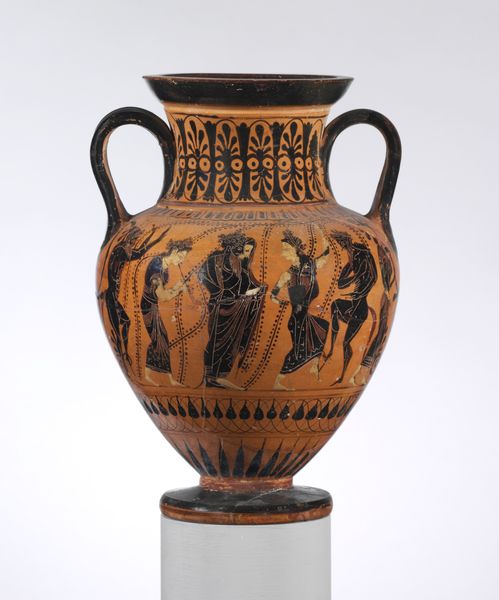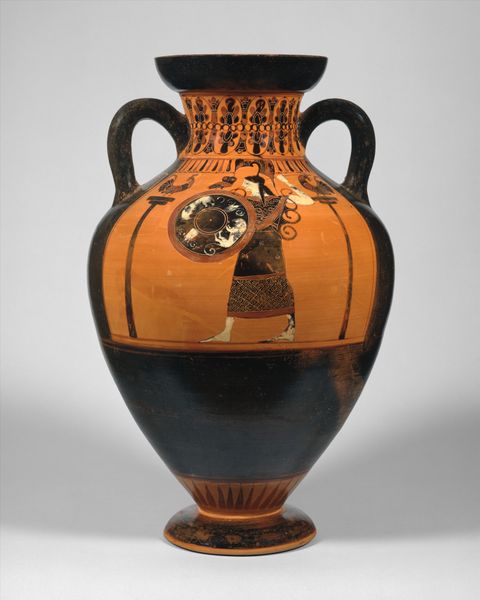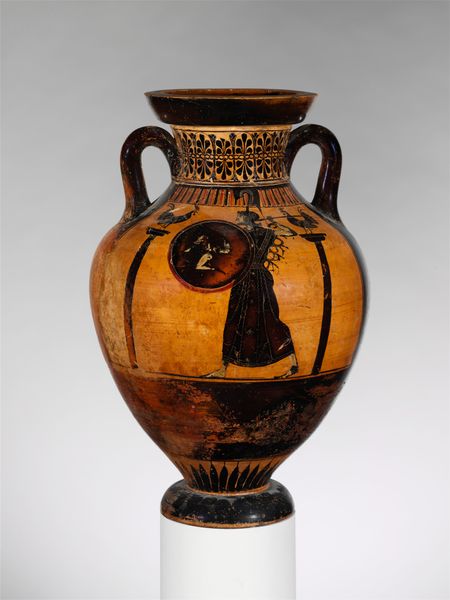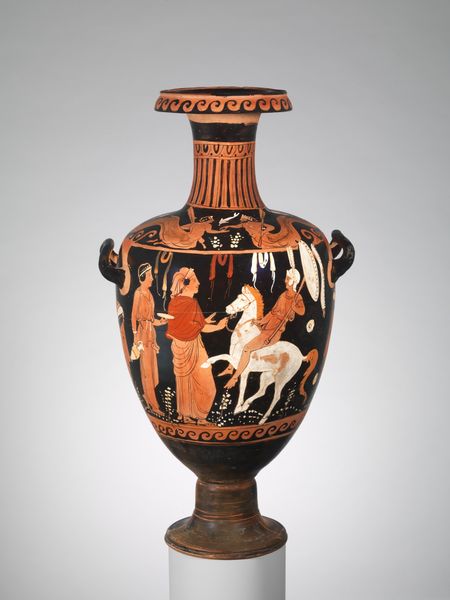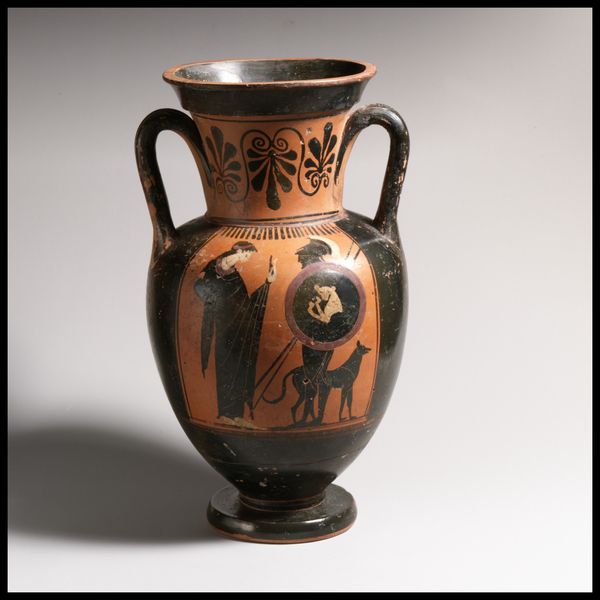
ceramic, terracotta
#
decorative element
#
narrative-art
#
pottery
#
greek-and-roman-art
#
ceramic
#
figuration
#
ancient-mediterranean
#
ceramic
#
genre-painting
#
terracotta
Copyright: Public domain
Curator: My first impression is this feels surprisingly modern, almost like a graphic novel panel. Editor: We're looking at a terracotta stamnos, an ancient Greek jar, dating back to around 525 BC. It resides here at the Metropolitan Museum. These vessels often stored liquids, oils, or even dry goods. What draws your eye? Curator: The procession of figures. Warriors, perhaps? They seem almost silhouetted, figures marching alongside their canine companions. And each shield displays a unique emblem; it's giving me major tarot vibes! Editor: Precisely! The repeating figures create a sense of rhythm, a patterned movement across the surface. Considering their function as storage vessels, we need to recognize the patriarchal symbolism: these vessels likely would have been used to hold precious materials, watched over by watchful, warrior-like figures. The shield iconography emphasizes status and identity, almost like heraldic crests. Curator: I love that insight. I can picture this filled with the richest olive oil, each pour guarded by those symbols. Does the bull relate to a myth? I always look for narratives lurking within the brushstrokes. Editor: The bull, the meander pattern... These are all coded references. Perhaps indicators of the city-state of origin or allusions to specific heroic myths, designed to resonate with a particular audience. Curator: I'm completely seduced by the handmade nature, imagining the artist carefully applying each brushstroke. Like a meditation, circling, filling... Do we know anything about their daily lives? Editor: Very little beyond what survives through material culture, unfortunately. We can see influences in composition: the placement of each image around the jar implies that it was supposed to be viewed in 360 degrees. But these works provide an intimate, physical link. Thinking about this pot as part of social rituals gives it a deeper presence and feeling of time and context. Curator: Thinking of how our interpretations shift over time is quite powerful... and, you know, rather humbling. This experience shifted my perspective once again. Editor: Indeed. Contemplating the intersection between form, function, and narrative opens endless paths for re-imagining and reflecting on the rich cultural legacy these objects hold.
Comments
No comments
Be the first to comment and join the conversation on the ultimate creative platform.
